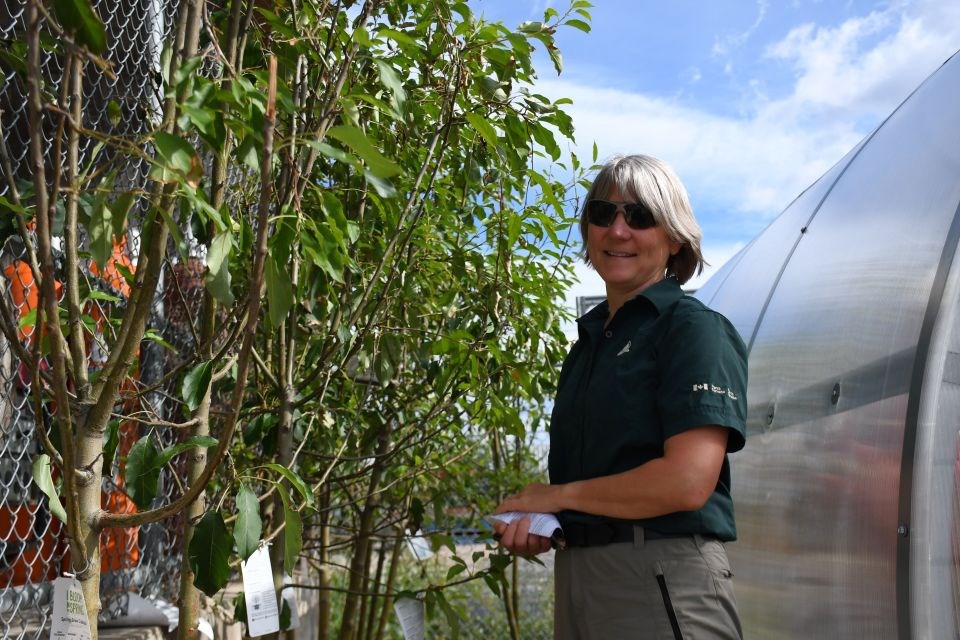JASPER – Roughly 300 fruit trees have been replaced in the Jasper townsite since Parks Canada launched its program last year, but close to 500 remain.
This spring, Parks Canada received 100 replacement trees. Around 25 trees remain available for eligible participants as of Wednesday (July 9).
“The goal is to reduce the number of non-native fruit trees in Jasper, because the fruit on those trees is an attractant for bears,” said Tracy McKay, ecologist team leader for Jasper National Park Wildlife Management. “Black bears have been coming into town pretty consistently since 2019 to feed on the fruit, and then that creates a safety issue for the public.”
In 2023, Parks Canada’s human-wildlife coexistence team responded to over 400 bear-related incidents in the townsite.
Through the Fruit Tree Replacement Program, Parks Canada is working to remove this bear attractant to keep people safe and avoid having to destroy any bears that become too habituated.
McKay reported they were close to removing all fruit trees from all public property. As for private properties, she hoped the free replacement trees would serve as an incentive.
“It’s hard to cut down a tree, and nobody wants less trees in the townsite, so we’re hoping we could swap them out with these free replacement trees,” she said.
The wildfire destroyed roughly 100 fruit trees, leaving about 500 in the townsite, but also destroyed 40 replacement trees. Anyone who lost a replacement tree in the fire will get a new one next year. Most of the 34 trees planted at the local school last year also survived the fire.
Although not enough trees have been removed to see a noticeable decline in bear incidents, McKay noted the willingness to replace fruit trees had “gone through the roof” since the program launched, whereas only 120 fruit trees had been taken down in the four years prior.
Nevertheless, fruit trees remain a concern for Parks Canada.
“Four or five hundred fruit trees is still definitely enough to draw bears into town, and because there’s less food available elsewhere [following the wildfire], I would expect that we would see bears in town again this fall,” McKay said. “They may come into town looking for food in the fall when they’re trying to gain weight before they go into the den.”
McKay added that the 2026 season may be the final year of the program, depending on funding availability.
“So yeah, we’re hoping we can continue it to one more year, and it’s really nice to see people getting on board with working towards human-wildlife coexistence,” she said.
The next step will likely be a bylaw, similar to the one in Banff, that allows officials to order the removal of fruit trees if there is clear evidence that bears are grazing on them.
The remaining replacement trees will be distributed on request throughout the summer. Parks Canada may be available to help with tree planting on a case-by-case basis depending on tree size, complexity and staff availability.
Any of the remaining trees that aren’t picked up by residents will be given to the Municipality of Jasper.
Some species that remain available include native paper birch, pollinator-friendly “Snowdance” Japanese tree lilac, Red Rocket maple with vibrant fall colours and Spring Snow flowering crab apple that is non-fruit bearing.
From April 21 to Aug. 13, removals will require a comprehensive survey, conducted by qualified Parks Canada staff, confirming no active bird nests.
Residents and businesses who are interested in replacing their fruit trees can contact Parks Canada at 780-820-0853 or via email.




